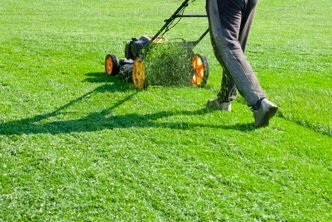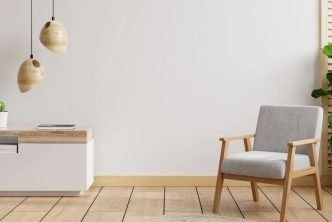Sustainable housing is no longer a distant dream; it’s a tangible reality reshaping everyone’s perception of residential spaces. As environmental concerns become increasingly urgent, modern display homes exemplify how green living and luxurious design can coexist seamlessly.
One great reason to visit a builders display home is to witness this transformation first-hand. The innovative and eco-friendly features showcased in these homes provide a glimpse into the future and tangible evidence of an emerging era of sustainable living.
This article delves deeper into the groundbreaking features making everyone’s homes greener than ever before.
Table of Contents
Embracing Renewable Energy Sources
In the global shift towards sustainable living, modern display homes are leading the charge by incorporating renewable energy features. Notably, solar panels and geothermal heating systems are two significant advancements these homes showcase.
Here are the explanations for these key features:
- Solar Panels: Highly favored by homeowners, solar panels convert sunlight into usable electricity. The upshot is twofold: homeowners enjoy reduced energy bills, and the reliance on fossil fuels lessens, thereby curtailing greenhouse gas emissions.
- Geothermal Heating Systems: These homes feature the innovative use of geothermal heating, a system that uses the earth’s consistent underground temperatures to provide heating in winter and cooling in summer—an efficient and renewable energy solution.
These energy solutions go beyond eco-friendly trends; they’re strategic choices that benefit homeowners while significantly contributing to global sustainability efforts.
Water Conservation Tactics
The blueprint for modern eco-friendly homes isn’t limited to energy efficiency; it also prioritizes water conservation. Today’s state-of-the-art homes incorporate impressive features designed to minimize water consumption and foster sustainability.
Here are a few of these notable tactics:
- Rainwater Harvesting Systems: These systems collect and store rainwater, reducing dependence on municipal water supplies. Stored water can be used for various purposes, such as watering gardens or flushing toilets, leading to significant water savings.
- Low-Flow Fixtures: Water-saving fixtures like faucets and showerheads use less water without compromising performance. They control the rate of water flow, making them efficient at conserving water.
Implementing these water conservation tactics isn’t only beneficial for homeowners—it’s pivotal in addressing water scarcity and contributing to global sustainability efforts.

Utilizing Sustainable Materials
Modern eco-friendly homes are redefining sustainability, extending it to the materials used in construction. By utilizing sustainable resources, these homes ensure durability while minimizing environmental impact.
Here are the two commonly used sustainable materials:
- Bamboo Flooring: Bamboo’s rapid growth makes it an eco-friendly alternative for flooring. Besides being a renewable resource, it adds a touch of elegance to your interiors without costing the earth.
- Recycled Steel: Using recycled steel in construction reduces the demand for new steel production, an energy-intensive process. It retains the same quality and durability as new steel, making it an intelligent choice.
This thoughtful selection of materials is about more than constructing homes; it’s about building a future where our residences coexist harmoniously with nature rather than exploiting it. It’s about making choices that benefit homeowners and the planet alike—it’s the essence of green living in action.
Incorporating Energy-Efficient Appliances
In a time of escalating energy costs and environmental concerns, incorporating energy-efficient appliances into modern homes is more than a luxury—it’s a necessity. These appliances facilitate daily tasks while reducing energy consumption and bills.
Here’s how it works:
- Energy Star-Certified Appliances: Appliances with an Energy Star rating consume significantly less power than their non-certified counterparts. Examples include refrigerators, dishwashers, and washers that offer optimal performance while using less energy.
- Smart Appliances: These technologically advanced appliances offer the ability to manage power consumption effectively. For instance, smart thermostats can adjust temperature settings based on your usage patterns, maximizing comfort and efficiency.
The shift towards energy-efficient appliances is a significant stride in the journey towards green living. This trend indeed benefits homeowners with cost-effective solutions and aids in the fight against excessive energy consumption and its environmental repercussions.
Designing For Natural Light And Ventilation
In the quest for eco-friendly living, the design approach in modern homes emphasizes maximizing natural light and ventilation. This approach enhances the aesthetic appeal and cuts down on energy consumption.
Here’s a closer look at how this design principle is implemented:
- Large Windows and Skylights: These architectural features allow more daylight into your home. By reducing the need for artificial lighting during the day, you’ll save on energy costs and enjoy the health benefits of natural light.
- Strategic Window Placement: Carefully positioned windows can promote cross-ventilation, allowing fresh air to circulate and naturally cool your home. This design feature reduces dependence on air conditioning, contributing to energy efficiency.
By thoughtfully incorporating these elements into modern homes, builders ensure you enjoy a healthier, more comfortable living space while minimizing your ecological footprint.
Conclusion
Embracing green living is a powerful way to instigate positive change. Choosing a modern display home equipped with eco-friendly features is more than a personal lifestyle upgrade—it’s a substantial step towards environmental stewardship. Your decision can inspire others and have a real impact. So, take a step towards sustainability today and pave the way for a brighter tomorrow.





